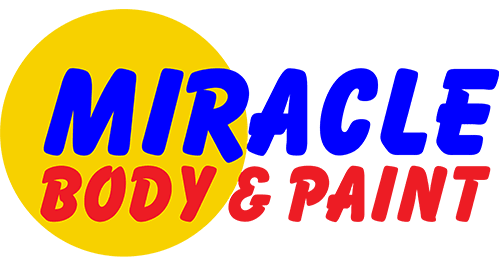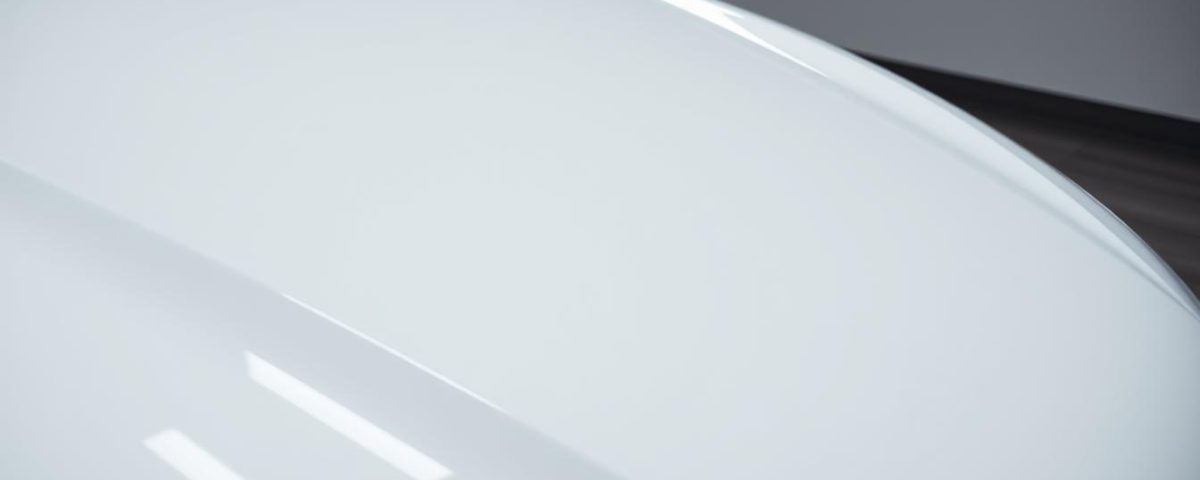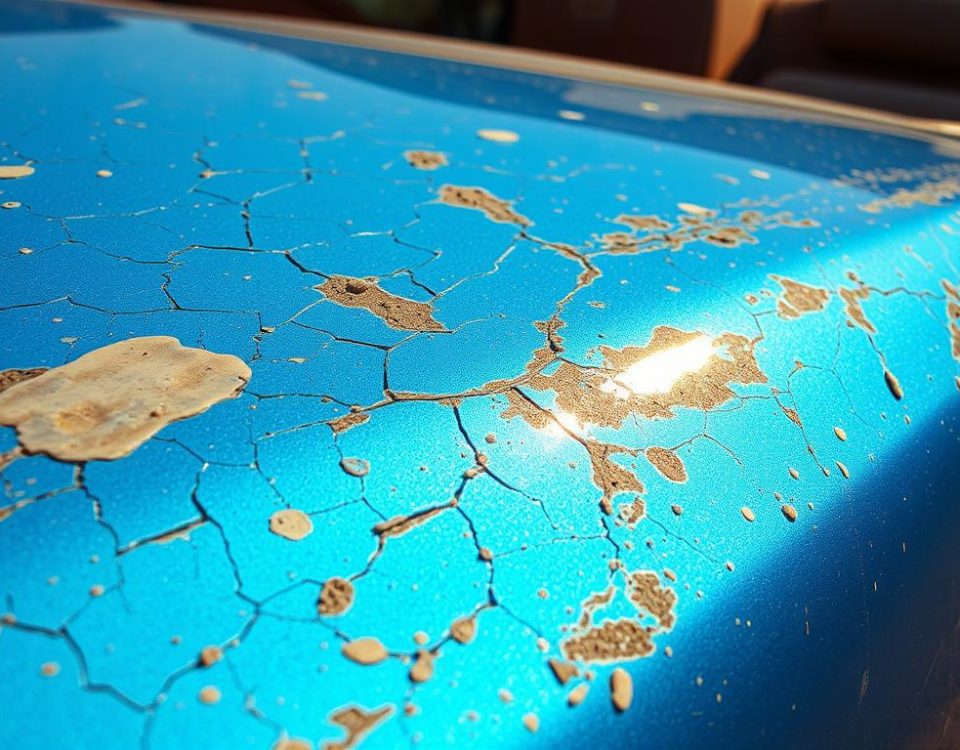
7 Signs It’s Time to Visit a San Antonio Auto Body Shop

Common Myths About Collision Repair in San Antonio
You’ve just had collision repairs, and the fresh finish deserves care. At Miracle Body and Paint Collision Center, we help you plan the right next steps at our two San Antonio locations so your vehicle keeps its shine and value.
Modern finishes use a thin clear coat that fights UV rays, acid rain, bird droppings, and road grime. Adding an extra layer—whether wax, a SiO2 ceramic coating, or paint protection film (PPF)—makes a big difference in long-term durability and gloss.
In this guide you’ll learn which options match your budget and driving habits, realistic lifespans for wax, coatings, and film, and when film is best after front-end repairs to stop chips. We also cover simple maintenance steps like safe washing and quick contaminant removal.
Expect clear advice on timing, professional prep, and cost versus value so your repaired finish blends seamlessly with the original and stays protected on the road.
Key Takeaways
- Fresh clear coats benefit from an added layer for UV and debris defense.
- Wax offers short-term shine; ceramic coating gives years of gloss with less upkeep.
- PPF delivers the best chip and scratch resistance, ideal for front-end work.
- Proper timing and professional application extend longevity and adhesion.
- Routine, careful washing and quick spot cleaning protect your finish and value.
Why post-collision paint needs extra protection right now
Immediately after repairs, a newly cured finish is vulnerable—adding a barrier now pays off.
Miracle Body and Paint Collision Center recommends planning paint protection the moment curing allows. Fresh clear layers are more open to etching from bird droppings and tree sap, plus UV exposure speeds oxidation.
You should add an extra layer as soon as curing permits because early contamination causes swirl marks and micro-scratches during initial washes. A sacrificial barrier reduces those risks and helps the repaired area match the rest of your vehicle.
Applying timely defense also limits rework and lowers future services costs. That saves you money and keeps the finish uniform so the repair doesn’t age faster than the original surface.
- Blocks UV to slow color fade and oxidation.
- Protects high-touch zones like door edges and handles.
- Buys time between deep details by resisting embedded dirt.
| Immediate Benefit | Why it matters | How soon to act |
|---|---|---|
| Reduce surface swirls | Prevents micro-scratches during early washes | Within days after curing |
| UV defense | Slows oxidation and color fade | Apply as soon as safe to coat |
| Lower rework risk | Fewer follow-up services and preserved quality | Plan protection during post-repair inspection |
Understanding modern paint layers and what damages them
A modern vehicle finish is a stack of systems, not a single coat. Primer, a color base, and a clear coat form the visible surface. That clear coat is only microns thick. Even light abrasion shows quickly.
Clear coat realities: microns of defense
The clear layer is fragile by design. Its job is gloss and UV blocking, but it wears. Embedded grit and everyday washing can create micro-scratches that dull the finish.
UV, acid rain, bird droppings, and tree sap: the daily assault
UV rays break down resins and fade color, especially on horizontal panels like roofs and hoods. Acid rain leaves mineral spots that etch if left. Bird droppings can mar within hours, and tree sap bonds and hardens, needing aggressive correction.
You protect value by acting fast: remove contaminants, store indoors when possible, and choose a strategy that thickens or fortifies the top layer.
- Micron-thin clear coat shows wear quickly.
- Quick removal of bird droppings and tree sap prevents lasting damage.
- Added barriers reduce contact and make maintenance safer.
| Threat | What it does | Quick action |
|---|---|---|
| UV rays | Fades and oxidizes resins | Park shaded; apply UV-resistant layer |
| Bird droppings | Acidic etch within hours | Remove immediately; wash and spot-treat |
| Tree sap | Bonds and stains if allowed to harden | Use solvent-safe remover; avoid abrasive polishing |
Car paint protection options at a glance
Deciding between wax, bonded coatings, or film comes down to durability, cost, and where you drive most. Miracle Body and Paint Collision Center helps you compare options quickly so you can act while the repair is fresh.
Wax and sealants
Best for short-term gloss and low cost. Traditional wax gives 2–3 months of warm shine. Synthetic sealants extend that to 4–6 months.
Ceramic coatings
Bonded SiO2 barrier adds hydrophobic behavior and easier washing. DIY kits last 1–2 years; professional finishes typically last 3–5 years.
Paint Protection Film (PPF)
Highest impact resistance. Film self-heals light marks with heat and often endures 8–10 years on high-impact zones. Use partial or full coverage based on budget and risk areas.
- Pick a level that fits how and where you drive, not just appearance.
- Blend film on high-risk panels with a ceramic coating elsewhere for balanced defense.
- Set realistic timelines for reapplication and routine maintenance.
| Type | Durability | Ideal use |
|---|---|---|
| Wax / Sealant | 2–6 months | Show finish, low cost |
| Ceramic coating | 1–5 years | Hydrophobic, easier wash |
| Paint protection film (PPF) | 8–10 years | High-impact areas, chips |
Paint Protection Film: the highest-impact shield
A clear polyurethane layer lets you defend high-hit zones without changing the look of your vehicle.
Where film matters most:
- Front bumper and leading hood edge
- Fenders, mirrors, and door edges
Self-healing top coats and heat activation
Many modern films have a topcoat that recovers from light marring when warmed by sunlight or warm water.
This self-heal effect removes small scratches and keeps gloss high without aggressive polishing.
Partial kits versus full wraps
Partial coverage targets the highest-risk panels and keeps costs down.
Full wraps offer the greatest long-term defense but raise the price and time for the job.
| Option | Typical life | Best for |
|---|---|---|
| Partial PPF kit | 6–10 years | Hood, bumper, mirrors |
| Full wrap | 8–10 years | Complete surface defense |
| PPF + coating | 8–10 years | High-impact zones + overall gloss |
Ask Miracle Body and Paint Collision Center about strategic paint protection packages after repair. A quality application in a clean shop makes the job last and helps prevent chips and scratches where they matter most.
Ceramic coatings: hydrophobic gloss and UV defense
SiO2-based coatings fuse to your clear coat to create a slick, water-shedding surface.
This bonded ceramic layer fills microscopic pores in the clear coat. It repels water and dirt, and it adds measurable defense against UV rays that fade color over time.
Miracle Body and Paint Collision Center can coordinate surface prep and recommend pro-grade ceramic options to match your goals. Proper decontamination and paint correction before application lock in the best results.
Pro-grade vs DIY:
- Professional ceramic coating: 3–5 years of durable gloss and often a warranty.
- DIY kits: 1–2 years; lower durability and more sensitive to prep quality.
- Combine ceramic coating with film on high-impact zones for added chip resistance.
Maintain hydrophobic behavior with gentle wash products. Avoid harsh chemicals and abrasive towels to preserve slickness and shine.
| Aspect | Pro-grade | DIY |
|---|---|---|
| Typical life | 3–5 years | 1–2 years |
| Prep required | Full decontam & correction | Light cleaning; correction varies |
| Finish quality | Higher gloss, stronger bond | Good initial gloss, shorter life |
Wax and sealants: budget-friendly, shorter-term protection
If you need a cost-conscious, quick barrier after bodywork, wax or a sealant is a practical first step.
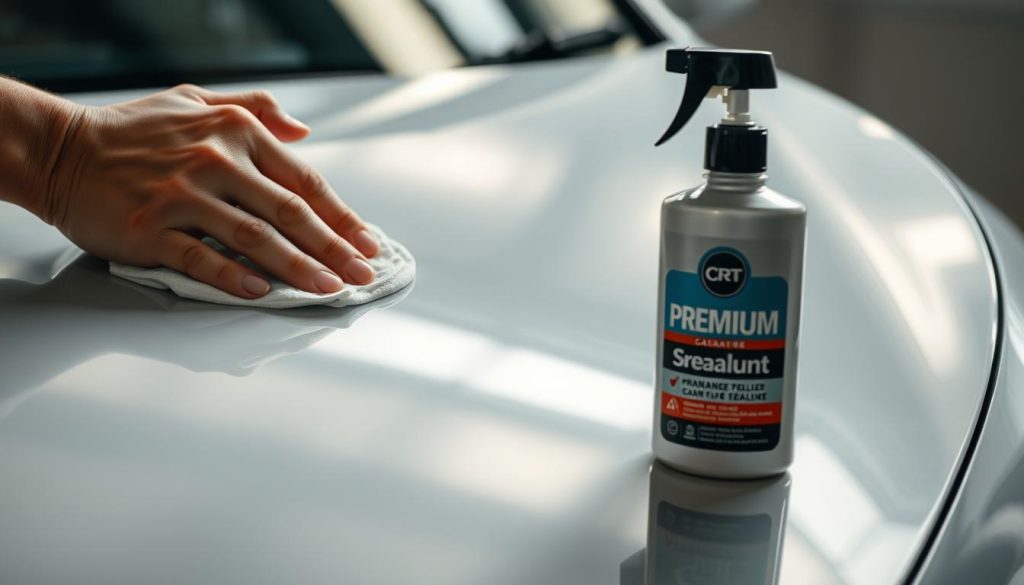
Carnauba warmth
Natural carnauba wax gives a deep, warm gloss and basic UV defense. Expect roughly 2–3 months of life on daily drivers.
It is easy to apply at home after surface decontamination and a light polish.
Synthetic durability
Synthetic sealants last longer—typically 4–6 months—and resist dirt and weather better. They act as a temporary bonded layer until you choose a longer-term coating or film.
Apply on a cool, shaded surface for best bonding and even coverage.
- Choose carnauba for rich appearance and simple DIY work.
- Pick a synthetic sealant for longer wear and weather resistance.
- Reapply every few months, especially if you drive daily.
- Use wax or sealant to bridge while the finish cures before a pro coating or film.
| Type | Typical life | Best for |
|---|---|---|
| Carnauba wax | 2–3 months | Warm gloss, easy DIY |
| Synthetic sealant | 4–6 months | Longer durability, dirt resistance |
| Hybrid toppers | 3–6 months | Extra slickness; seasonal top-up |
Miracle Body and Paint Collision Center suggests these as an entry option when you need quick defense right after repairs. They are cost-effective but require regular upkeep compared with professional coating or film.
Cost comparison: coating, film, and traditional protection
Think of each option as an investment: higher upfront cost can mean lower monthly ownership expenses and less frequent touch-ups.
Typical price ranges
- Teflon / ceramic sprays: $50–$200.
- Professional ceramic coating: $500–$2,000 (often lasts 3–5 years).
- Paint protection film (PPF): $1,000–$5,000 depending on coverage (8–10 years on high-impact zones).
- Wax under $50; synthetic sealants slightly higher (months of life versus years).
Monthly cost of ownership
Compare upfront cost divided by expected years or months of service to see true value. A $1,500 ceramic coating over four years can cost less per month than quarterly wax cycles.
| Option | Typical cost | Expected life |
|---|---|---|
| Wax / Sealant | Under $50–$200 | 2–6 months |
| Ceramic coating | $500–$2,000 | 3–5 years |
| PPF / Film | $1,000–$5,000 | 8–10 years |
Plan with realism: match coverage area to risk, factor in professional services for prep, and budget for periodic inspections or top-ups to protect long-term value. Miracle Body and Paint Collision Center helps you align services with budget and goals.
Durability comparison across solutions
How long a barrier lasts depends as much on where and how you drive as on the product itself.
Realistic lifespans range from months to a decade. Wax gives about 2–3 months of service. Synthetic sealants hold 4–6 months. DIY ceramic coating lasts roughly 1–2 years, while professional ceramic coating typically endures 3–5 years. High-quality paint protection film (ppf) can protect leading edges for 8–10 years.
Harsh sun, coastal salt, frequent brush-style automatic washes, and heavy highway mileage all shorten these timelines. These conditions cause faster wear, fading, and increased chance of chips and damage.
Extend service with simple habits
- Wash regularly using safe methods and avoid brush washes.
- Remove contaminants quickly—bird droppings, sap, and salt reduce longevity.
- Monitor ceramic beading and slickness as performance cues.
- Inspect ppf edges and high-impact areas annually for lifting or wear.
- Plan refresh cycles based on mileage, storage, and climate.
Miracle Body and Paint Collision Center helps set realistic expectations and build a maintenance plan so you avoid premature wear and preserve resale value. For detailed steps, see our post-repair care guide.
| Option | Typical life | Main risk factors |
|---|---|---|
| Wax | 2–3 months | UV, frequent washes, road grime |
| Synthetic sealant | 4–6 months | Salt, industrial fallout, sun exposure |
| Ceramic coating (DIY) | 1–2 years | Poor prep, abrasive washes |
| Ceramic coating (pro) | 3–5 years | High UV, neglect of maintenance |
| Paint protection film (PPF) | 8–10 years | Stone impacts, edge lifting if not inspected |
Choosing the right protection for your driving and climate
Your driving patterns and local climate dictate whether a sacrificial film or a slick coating serves you best. Start by matching routes, parking habits, and how long you’ll keep the vehicle before choosing a level of defense.
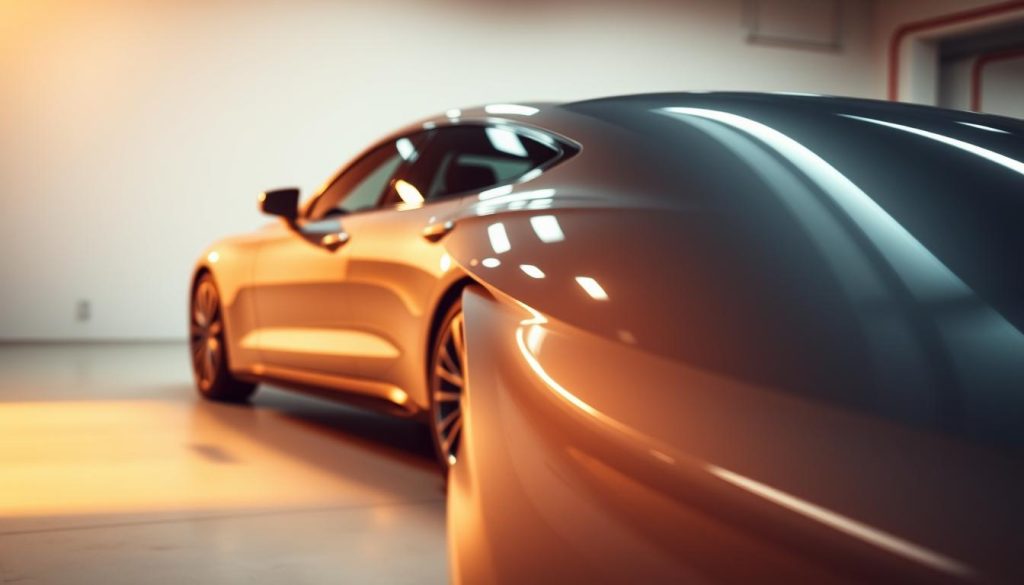
Highway commuters and stone chips
If you log long highway miles, prioritize film on front-facing panels. PPF and partial kits protect the bumper, hood edge, and mirrors from stone chips and road debris.
Self-healing film helps minor scuffs recover with warmth, so heat can be a benefit when quality materials are used.
City parking and swirl resistance
For urban drivers, favor a bonded ceramic coating. A slick coating lowers contact marks, eases cleaning from metered parking, and cuts swirl formation during frequent washes.
Coastal salt, extreme heat, and UV exposure
In high-UV or coastal zones, add extra UV defense. Salt and strong rays accelerate dulling, so combine film on impact zones and a ceramic finish elsewhere for balanced protection.
- Adapt coverage to whether you garage the car or park outside.
- Choose maintenance-friendly options if you wash at home.
- Work with Miracle Body and Paint Collision Center to match products to San Antonio sun, routes, and needs.
| Use case | Recommended layer | Why |
|---|---|---|
| Highway miles | PPF / film | Stops stone chips on leading edges |
| City driving | Ceramic coating | Reduces swirls; easier cleanup |
| High UV / coastal | Film + coating | UV defense and impact resistance |
Car paint protection maintenance schedule
A simple, consistent schedule keeps a repaired finish looking factory-new and cuts future shop visits. Miracle Body and Paint Collision Center emphasizes routine care to preserve appearance and limit additional services.
Two-bucket wash method cadence
Wash every one to two weeks using the two-bucket method and a quality microfiber mitt. This reduces swirl risk and removes surface dirt without scrubbing.
Avoid brush-style washes; touchless bays are okay occasionally. Dry with plush microfiber or a blower to prevent towel marring.
Decontamination and safe drying intervals
Decontaminate when water stops bead or after heavy road grime. Ceramic-coated finishes benefit from biweekly washing and periodic clay or chemical decon to restore beading.
Spot-clean bird droppings immediately to prevent etching. Use gentle, product-compatible solvents and soft towels only.
When to refresh wax, toppers, or replace film
- Refresh wax every 2–3 months; synthetic sealants every 4–6 months.
- Top ceramic coating with compatible spray sealants to boost slickness without harming the bond.
- Inspect film edges and high-impact areas quarterly; quality film can last 8–10 years before replacement.
| Task | Cadence | Why |
|---|---|---|
| Routine wash | 1–2 weeks | Removes dirt and limits swirls |
| Decon / clay | As needed (quarterly or after contamination) | Restores beading and surface slickness |
| Wax / sealant | 2–6 months | Maintains gloss and temporary defense |
Document intervals and keep a small kit of approved products. Regular, simple care protects your investment for years and reduces the chance of future services.
Pro installation vs DIY: what to know before you start
Before you roll up your sleeves, consider which steps need a controlled shop environment and which you can do at home.
PPF is almost always a pro job. The film needs precise fitment, heat shaping, and dust-free handling. Mistakes waste premium material and can cause visible edge lift or trapped debris.
Professionals use templates, specialty tools, and clean-room conditions. That lowers risk and preserves clarity on complex curves. Miracle Body and Paint Collision Center partners with trusted installers and can advise on local services.
Why PPF needs experienced installers
Film stretches and forms over contours. Without skill you get bubbles, seams, or poor adhesion. A trained installer minimizes waste and ensures the film heals and resists chips.
Surface prep and correction for coatings
Coating success starts with thorough decontamination. Clay, compound, and careful polishing remove bonded fallout and minor defects. If you seal a flaw, it stays visible under any coating.
Professional ceramic coating application gives access to higher-grade products and warranties. DIY ceramic kits can save money but often shorten lifespan and risk trapped imperfections. Traditional wax and sealants remain the most forgiving DIY choices.
| Task | Pro advantage | DIY suitability |
|---|---|---|
| PPF installation | Clean-room fitment; template accuracy; warranty | No — high risk of errors |
| Ceramic coating | Full correction, professional-grade products, longer life | Yes, with careful prep; shorter lifespan |
| Wax / sealant | Optional pro detail for best finish | Yes — easy and forgiving |
Plan timing so application syncs with curing. Ask installers about warranties and maintenance guidance. That keeps results consistent and helps you protect your investment.
Post-repair timing: when to apply protection after fresh paint
After a repair, knowing when the finish is stable is the difference between a lasting finish and repeat services.
Curing considerations before coating or filming
Fresh clear coats must cure to release solvents and achieve full hardness. Apply a bonded coating or film too soon and you risk trapped gases and poor adhesion.
You should consult your repair paperwork and speak with Miracle Body and Paint Collision Center about the exact window for your job.
Interim care to avoid etching and marring
While the surface cures, use mild washes and soft towels. Park in shade to limit heat stress and remove bird droppings immediately to prevent marks.
- Check repair notes before booking any application.
- Avoid aggressive towels and brush washes during the cure period.
- Consider a temporary sealant only if the shop confirms it’s safe.
- Keep records of dates and products to support warranties and future services.
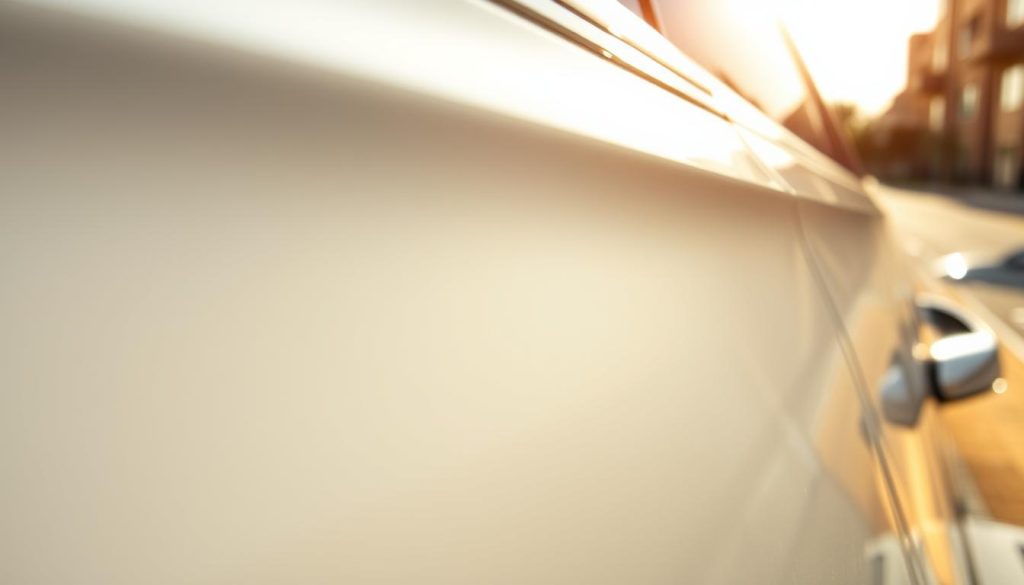
| When | Action | Why |
|---|---|---|
| Days after repair | Mild wash, shade parking | Remove contaminants without stressing the finish |
| Weeks after repair | Confirm cure with shop; schedule coating or film | Prevents trapped solvents and improves adhesion |
| After cure confirmed | Professional application of coating or film | Locks in gloss and extends life by years |
Miracle Body and Paint Collision Center will advise on safe timing so your extra layer bonds correctly and delivers long-term value.
Product examples and add-ons that boost protection
Choosing reliable brands and doing the prep right makes a big difference. Below are practical examples you can use to extend gloss and resist dirt while your repaired surface settles.
Sealants and ceramic sprays:
- Chemical Guys JetSeal for a durable sealant layer.
- Turtle Wax Hybrid Solutions Ceramic Spray Coating for an easy ceramic boost between professional services.
- CarPro Reload as a silica-based topper to restore slickness after washes.
Polishes and correction systems:
- Clay bars and Chemical Guys C4 Clear Cut to remove bonded fallout before any coating or sealant.
- Meguiar’s P4 Paint Perfection paired with a TORQ X dual-action polisher to remove swirls and refine gloss.
- Meguiar’s Ultimate Liquid Wax for a quick DIY gloss while you plan a longer-term coating.
Application tips: follow manufacturer directions exactly to avoid high spots. Use quality microfiber and foam pads to prevent introducing defects during prep and application. Miracle Body and Paint Collision Center can recommend specific brands and step-by-step prep to enhance your repair’s finish.
| Product Type | Example | Primary Benefit |
|---|---|---|
| Sealant | Chemical Guys JetSeal | Durable barrier and gloss |
| Ceramic Spray | Turtle Wax Hybrid / CarPro Reload | Hydrophobic beading and slickness |
| Correction | C4 + P4 + TORQ X | Removes swirls; maximizes bonding |
Mistakes that make paint age faster after a collision repair
A fresh repair looks great, but small care errors can speed up wear and mean more trips to the shop.
Choose gentle habits to keep that restored finish bright. Below are common mistakes and clear steps to avoid them. Miracle Body and Paint Collision Center advises following simple routines to cut down on future services and keep long-term quality.
Brush washes and aggressive towels
Avoid brush-style automatic washes; their bristles create micro-scratches that dull gloss and shorten any layer of protection.
Use plush microfiber, two-bucket washing, and gentle pressure to limit scratches and dirt embedding.
Ignoring bird droppings, sap, and water spots
Remove bird droppings and tree sap quickly. Acidic spots etch the clear layer if left, and mineral deposits can harden in sun.
Address spots with safe cleaners, store towels clean, and inspect your vehicle often. If you spot film lifting or unusual haze after a wash, contact a pro right away.
- Skip brush washes; prefer touchless or hand wash.
- Treat contaminants fast to avoid lasting damage.
- Refresh protective layers on schedule to maintain defense.
| Issue | Effect | Quick fix |
|---|---|---|
| Brush wash | Micro-scratches | Hand wash with microfiber |
| Bird droppings | Etching | Spot-clean immediately |
| Water spots | Mineral marks | Decon and gentle polish |
Conclusion
Finish care after collision repair affects long-term resale and daily enjoyment—choose layers that match your life.
You now know how wax or a sealant gives quick, budget-friendly coverage, how a professional ceramic coating eases cleaning and reduces UV fade, and how PPF or film gives top impact resistance with self-healing on leading edges.
Pairing PPF on high-risk panels with a ceramic coating elsewhere balances cost, durability, and day-to-day cleanliness. Align lifespans with how long you’ll keep the car to get the best value.
Lean on professionals for prep and timing so the extra layer bonds correctly and lasts. Hire Miracle Body and Paint Collision Center to restore collision damage and plan the right protection next.
Two locations to serve you: North West San Antonio – Leon Valley, (210) 680-1987, 6217 Grissom Rd., San Antonio, TX 78238. North East San Antonio, (210) 858-3630, 4650 Walzem Rd, San Antonio, TX 78218.

